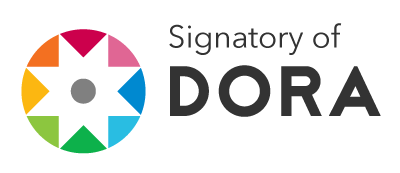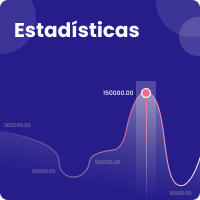Bioética de los Bancos de muestras en la Pesquisa Neonatal
Resumen
La creación y empleo de bancos de muestras o biobancos ha demostrado tener una gran importancia dentro del desarrollo e implementación de programas de pesquisa neonatal. Estos nos permite no sólo diagnosticar enfermedades que no pueden ser detectadas clínicamente y que con un tratamiento temprano pueden ser evitadas secuelas como el retraso mental y la muerte sino que nos permite realizar estudios poblacionales para evaluar la influencia de diferentes parámetros como la edad gestacional, el sexo, el peso al nacer, la edad de toma de muestra, así como otros factores que pueden afectar los resultados de los ensayos clínicos. El uso de biobancos supone tener en cuenta aspectos bioéticos, debido a que una muestra biológica se considera como parte del organismo inclusive cuando está separada de él, por lo que debe ser respetada y cuidada su integridad, aún cuando ya ha sido extraída y almacenada. La pesquisa neonatal y el empleo de biobancos son regulados en todos los países donde se encuentran implementados con el fin de garantizar que se cumplan estos aspectos éticos.
Descargas
Disciplinas:
Bioética, ciencias sociales, ciencias médicasLenguajes:
esReferencias bibliográficas
• ABASCAL, M.; De A BAJO, F. et al. (2007). Recomendaciones sobre los aspectos éticos de las colecciones de muestras y bancos de materiales Humanos con fines de investigación biomédica. Rev. Esp. Salud Pública, 81, 95-111.
• AURAY, C. y PATENAUDE, J. (2006). A biobank management model applicable to biomedical research. BMC Medical Ethics, 7(4). BANTAWRIGHT, S. (2008). Disorders of Fatty Acid Oxidation in the Era of Tandem Mass Spectrometry in Newborn Screening. Screening Newborn and Infant Nursing Reviews, 8(1), 18-29.
• BARBI, M.; BINDA, S. et al. (1998). Use of Guthrie cards for the early diagnosis of neonatal herpes simplex virus disease. Pediat Infect Dis J, 17, 251-252.
• Boletín de las Cortes (22/9/2006). Proyecto de Ley de Investigación Biomédica 121/104. BOCE.
• BURSE, V.; DEGUZMAN, M. et al. (1997). Preliminary investigation of the use of dried blood spots for the assessment of in utero exposure to environmental pollutants. Biochem Mol Med, 61, 236-239.
• CAMBON-THOMSEN, A. (2004). The social and ethical issues of postgenomic human biobanks. Nat Rev Genet, 5(11), 866-873. Centers for Disease Control and Prevention (1996). Populationbased prevalence of perinatal exposure to cocaine, Georgia, 1994. MMWR Morb Mortal Wkly Rep, 45, 887-891.
• Comisión Europea (2004). 25 recomendaciones sobre las repercusiones éticas, jurídicas y sociales de las pruebas genéticas. Bruselas: Comisión Europea.
• Comité de Ética de The Human Genome Organisation (2000, April 9). Statement on Benefit-Sharing. Retrieved 12 de marzo 2007, from http://www.hugo-international.org/Statement_on_Benefit.
• Consejo de Europa (1990). Recomendación No. R (89)4 sobre Recogida de datos epidemiológicos en Atención Primaria. Int Dig Health Leg, 41, 148.
• Consejo de Europa (1997). Convenio para la protección de los Derechos Humanos y de la Dignidad del Ser Humano con respecto a las aplicaciones de la Biología y de la Medicina: Convenio sobre los Derechos Humanos y la Biomedicina. Estrasburgo.
• Consejo de Europa (2005). Additional protocol to the convention on human rigths and biomedicine concerning biomedical research. Estrasburgo.
• CRAWFORD, D.; CAGGANA, M. et al. (2002). Characterization of beta-globin haplotypes using blood spots from a population- based cohort of newborns with homozygous HbS. Genet Med, 4, 328-335. Database. ”The Long QT Syndrome” from http://www.ssi.dk/en/forskning/lqtsdb/lqtsdb.htm.
• De MONTGOLFIER, S.; MOUTEL, G. et al. (2006). Evaluation of biobank constitution and use: multicentre analysis in France and propositions for formalising the activities of research ethics committees. Eur J Med Genet, 49, 159-167.
• De SIQUEIRA, J.E. (2009). Los orígenes del consentimiento informado en clínica (2009). Revista de bioética latinoamericana 3(3).
• ELLIOTT, P. y PEAKMAN, T. (2008). The UK Biobank sample handling and storage protocol for the collection, processing and archiving of human blood and urine. International Journal of Epidemiology. 37, 234-244.
• EUROPA, C.d. (2006, 15 de marzo). Recomendación 4 sobre Investigación con materiales biológicos de origen humano. C. d. Europa. Estrasburgo.
• European Federation of the Internacional Epidemiological Association, I. E. A. (2002). Good epidemiological practice (GEP) proper conduct in epidemiological research.
• European Society of Human Genetics (2003). Data storage and ADN banking for biomedical research: technical, social and ethical issues. Recommendations of the European Society of Human Genetics. Eur J Hum Genet 11(Suppl 2), S8-S10.
• EVERETT, M. (2003). The social life of genes: privacy, property and the new genetics. Soc. Sci. Med. 56(1), 53-65.
• GARCÍA, I.; DE LAS C UEVAS, N. et al. (2009). The Spanish HIV BioBank: a model of cooperative HIV research. Retrovirology 6, 27. German National Ethics Council (2004). Opinion on biobanks for research. Retrieved 2 de Agosto, 2008, from http://www.ethikrat.org.
• GODARD, B.; SCHMIDTKE, J. et al. (2003). Data storage and DNA banking for biomedical research: informed consent, confidentiality, quality issues, ownership, return of benefits. A professional perspective. Eur J Hum Genet.(Suppl 2), S88-S112.
• GOTTWEIS, H. y Z ATLOUKAL, K. (2007). Biobank governance: trends and perspectives. Pathobiology 74, 206-211.
• GRUTERS, A. (1999). Pitfalls in neonatal screenings for congenitals hypothyroidism. 38th Annual Meetings of the European Society of Paediatric Endocrinology. Poland: Warsaw.
• GWINN, M.; PAPPAIOANOU, M. et al. (1991). Prevalence of HIV infection in childbearing women in the United States: surveillance using newborn blood samples. JAMA 265, 1704-1708.
• JAKOBS, C.; van den HEUVEL, C. et al. (1993). Diagnosis of Zellweger syndrome by analysis of very long-chain fatty acids in stored blood spots collected at neonatal screening. J Inherit Metab Dis. 16, 63-66.
• JIMÉNEZ, N. (2003). Los derechos de los pacientes sobre su muestra biológica. Distintas opiniones jurisprudenciales. Revista de Derecho y Genoma Humano. 19, 207-228.
• JOLY, Y. y KNOPPERS, B. (2006). Pharmacogenomic data sample collection and storage: ethical issues and policy approaches. Pharmacogenomics. 7, 219-226.
• KHARABOYAN, L.; AVARD, D. et al. (2007). Storing Newborn Blood Spots: Modern Controversies. The Journal of Law, Medicine and Ethics. 32(4), 741-748.
• KNOPPERS, B.M.; JOLY, Y. et al. (2006). The emergence of an ethical duty to disclose genetic research results: international perspectives. Eur J Hum Genet. 14(12), 1322.
• LARSEN, L.; FOSDAL, I. et al. (1999). Recessive Romano-Ward syndrome associated with compound heterozygosity for two mutations in the KVLQT1 gene. Eur J Hum Genet. 7, 724-728.
• LARSEN, T.; LASSEN, J. et al. (1998). The Arg506Gln mutation (FV Leiden) among a cohort of 4188 unselected Danish newborns. Thromb Re. 89, 211-215.
• MARTÍN, A.; MARTÍN, M. et al. (2005). Outstanding legal and ethical issues on biobanks. Ed. Instituto de Salud Carlos III. Ministerio de Sanidad y Consumo.
• McEWEN, J. y REILLY, P. (1994). Stored Guthrie cards as DNA “banks.” Am J Hum Genet. 55, 196-200.
• MOUTEL, G.; De MONTGOLFIER, S. et al. (2004). Study of the involvement of research ethics committees in the constitution and use of biobanks in France. Pharmacogenetics. 14(3), 195-198.
• NELSON, K.; GRETHER, J. et al. (2001). Neuropeptides and neurotrophins in neonatal blood of children with autism or mental retardation. Ann Neurol. 49(5), 597-606.
• NORGAARD-PEDERSEN, B. Y HOUGAARD, D. (2007). Storage policies and use of the Danish ENewborn Screening Biobank. J Inherit Metab Dis. 30, 530-536.
• NORGAARD-PEDERSEN, B. Y SIMONSEN, H. (1999). Biological specimen banks in neonatal screening. Acta Paediatrica. 88(12 Supp 432), 106 - 109.
• OLNEY, R.; MOORE, C. et al. (2006). Storage and use of residual dried blood spots from state Newborn screening programs. Journal Pediatric. 148, 618-622.
• PEARSON, H. (2004). Summit calls for clear view of deposits in all biobanks. Nature. 432:426.
• PELIAS, M. Y M ARKWARD, N. (2001). Newborn screening, informed consent, and future use of archived tissue samples. Genet Test. 5 , 179-185.
• PETERSEN, M.; BROSTRøM, K. et al. (1993). Early manifestations of the carbohydrate-deficient glycoprotein syndrome. J. Pediatr. 122, 66-70.
• RAIMANN, E. y CORNEJO, V. (2007). Defectos de la oxidación de ácidos grasos como causa de hipoglucemia no cetósica en el niño. Rev Chil Nutr. 34(1).
• REYMOND, M.; STEINERT, R. et al. (2002). Ethical, legal and economic issues raised by the use of human tissue in postgenomic research. Dig Dis. 20(3-4), 257-265.
• SHAW, G.; ZHU, H. et al. (2003). Genetic variation of infant reduced folate carrier (A80G) and risk of orofacial and conotruncal heart defects. Am J Epidemiol. 158, 747-752.
• SORENSEN, K.; JESPERSGAARD, C., et al. (2007). Whole genome amplification on DNA from filter paper blood spot samples: an evaluation of selected systems. Genet Test. 11, 65-71.
• TEN B RINK, H.; van den HEUVEL, C. et al. (1993). Diagnosis of peroxisomal disorders by analysis of phytanic and pristanic acids in stored blood spots collected at neonatal screening. Clin Chem. 39, 1904-1906.
• WILCKEN, B.; BAMFORTH, F. et al. (2003). Geographical and ethnic variation of the 677C_T allele of 5,10 methylenetetrahydrofolate reductase (MTHFR): findings from over 7000 newborns from 16 areas world wide. J Med Genet 40, 619-625.
• ZAMUDIO, T. (2005). Proyecto Genoma Humano. Retrieved 15 de enero, 2010, from http//wwwprodiversitas.bioetica.org/nota66-bis.htm.
• ZIKA, E. y S CHULTE, T. In den Baumen, et al. (2008). Sample, data use and protection in biobanking in Europe: legal issues. Pharmacogenomics 9(773-81).












